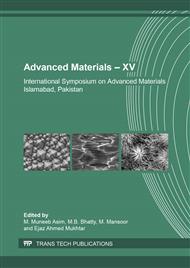p.236
p.245
p.251
p.256
p.262
p.268
p.275
p.283
p.293
Failure Study of Two Dissimilar Steels Joined by Spot Welding Technique
Abstract:
Resistance spot welding (RSW) process is of paramount importance in automotive industry for the fabrication of metallic components. Several dissimilar alloys could easily be joined by resistance spot welding. However, the joining of the stainless steel and galvanized carbon steel is challenging task since weld fusion zone properties are affected significantly. Indeed, the reliability of the component lies in the sound quality of spot weld. The overload failure mode of the weld zone was determined by preparing lap-shear specimens and then carrying out tensile-shear test. Microstructures and hardness of the weld nuggets were also brought under considerations. It was found that weld nugget size and strength of that sheet material which has lower electrical resistance are the controlling factors of the failure mode. The aim of this study was to find out the causes of spot welds failure in terms of parameters favoring the pull-out failure mode, role of fusion zone size (FZS), nugget and base metal by controlling the process parameters.
Info:
Periodical:
Pages:
262-267
Citation:
Online since:
September 2018
Authors:
Keywords:
Permissions:
Share:
Citation:


